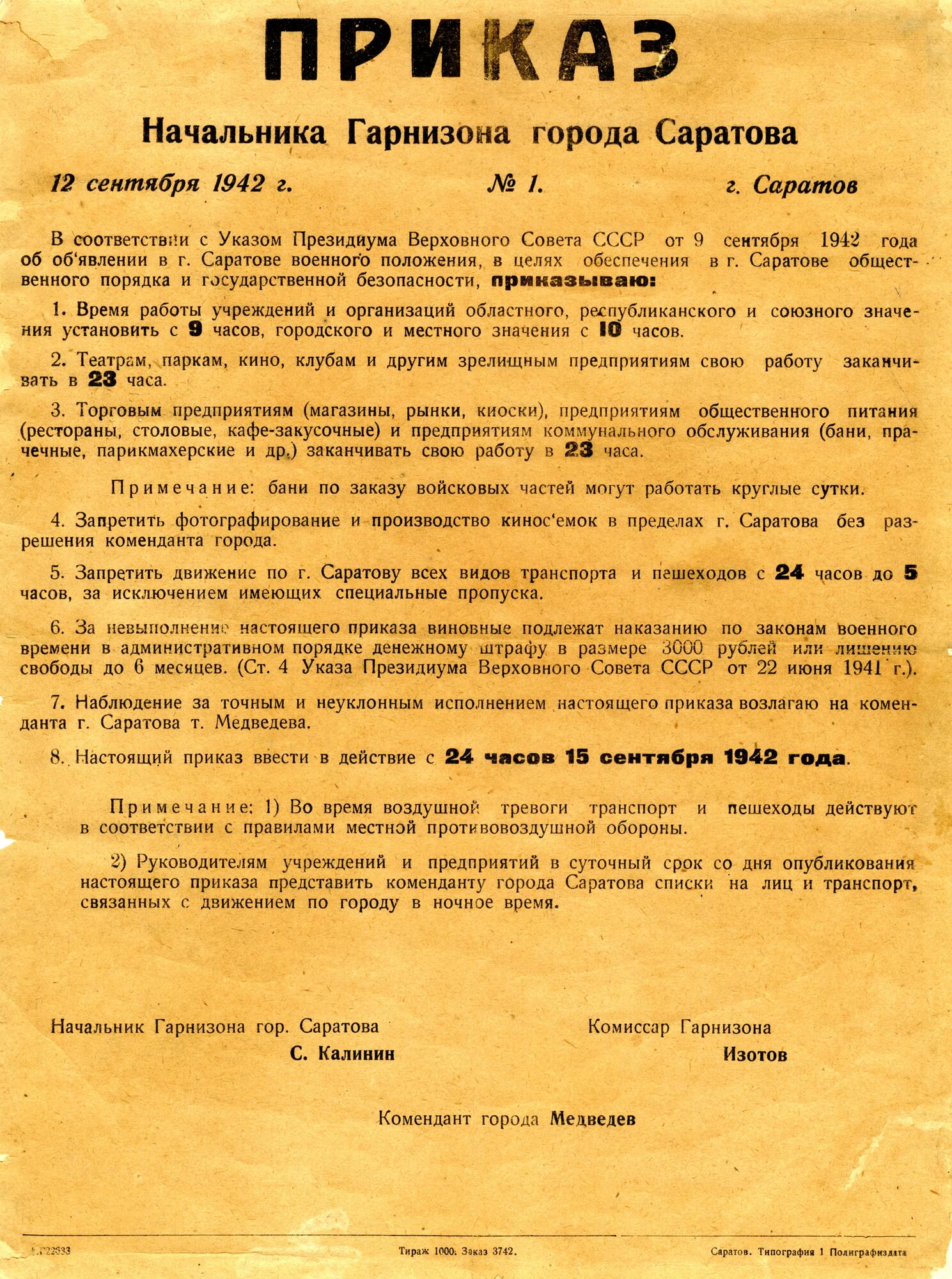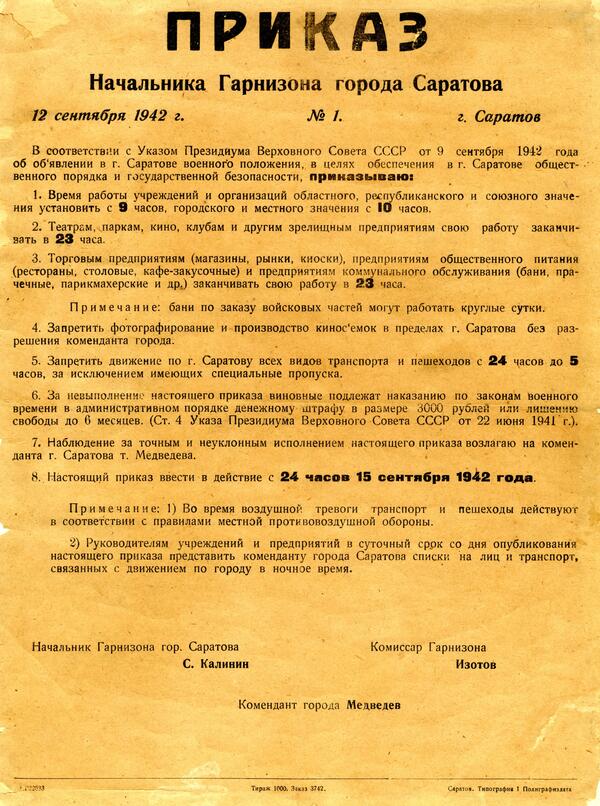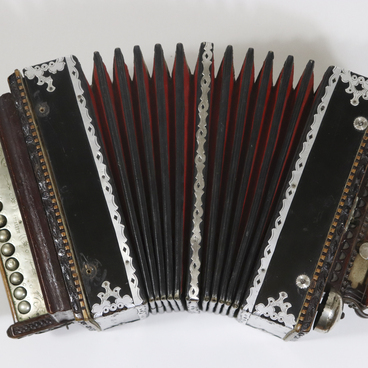The exhibition hall displays a flyer with the Saratov City garrison’s chief’s Order № 1 from 12 September 1942. The order was decreed in according with the decree from the Presidium of the Supreme Soviet of the USSR, to give notice about the introduction of martial law in Saratov. The working hours for institutions and organizations, including shops, markets, public eating facilities and utility services, were regulated. Photography and filming were forbidden within Saratov without permission from the city’s mayor. All transport and pedestrian walking was restricted, except for those with special passes. The flyer outlines that, if there is an air raid alert, then transport and pedestrians should act in accordance with the rules of the local air defense. Failure to comply with this decree was punishable under war-time laws.
The war’s outbreak changed the appearance and everyday rhythm of life in Saratov. Full blackouts had already ordered by 12 August 1941. Hastily-prepared anti-aircraft facilities were set up on the streets, including narrow slit trenches and concealed positions. Work was carried out on camouflaging and blacking-out establishments and houses. Security was strengthened at the S.M. Kirov factory, the aircraft factory and other strategic facilities.
Between 1942 and 1943, Saratov was hit by ruthless bombing campaigns. The first blows dealt by the German air force were aimed at the Saratov ball bearing factory. Particularly brutal aerial bombing was carried out in September of 1942, at the height of the Battle of Stalingrad. The Nazi air force repeatedly mined the Volga, striking the convoys of ships carrying military cargo and oil. They also tried to wreck the railway bridge. The aircraft factory was partially destroyed. The management of the factory took the decision to rebuild the factory as soon as possible. Within five days, aircraft assembly had started again in quickly built wooden buildings and army tents. The factory was completely rebuilt within 78 days. In total, 25 air raids were carried out on Saratov, with around 7,000 bombs being dropped. More than 400 civilians were killed.
The war’s outbreak changed the appearance and everyday rhythm of life in Saratov. Full blackouts had already ordered by 12 August 1941. Hastily-prepared anti-aircraft facilities were set up on the streets, including narrow slit trenches and concealed positions. Work was carried out on camouflaging and blacking-out establishments and houses. Security was strengthened at the S.M. Kirov factory, the aircraft factory and other strategic facilities.
Between 1942 and 1943, Saratov was hit by ruthless bombing campaigns. The first blows dealt by the German air force were aimed at the Saratov ball bearing factory. Particularly brutal aerial bombing was carried out in September of 1942, at the height of the Battle of Stalingrad. The Nazi air force repeatedly mined the Volga, striking the convoys of ships carrying military cargo and oil. They also tried to wreck the railway bridge. The aircraft factory was partially destroyed. The management of the factory took the decision to rebuild the factory as soon as possible. Within five days, aircraft assembly had started again in quickly built wooden buildings and army tents. The factory was completely rebuilt within 78 days. In total, 25 air raids were carried out on Saratov, with around 7,000 bombs being dropped. More than 400 civilians were killed.



